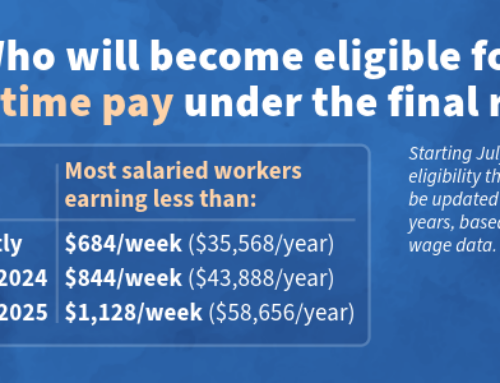This past Friday, June 5th, the Paycheck Protection Program Flexibility Act (PPPFA) was signed into law. This Act modifies the Paycheck Protection Program in several ways and is summarized below:
- Borrowers now have a 24-week covered period to use the PPP funds. However, borrowers may elect to keep the original 8-week covered period.
- Borrowers are now required to only spend 60% of their loan on payroll costs, a reduction from the original 75% requirement. However, whereas under the 75% requirement, borrowers could receive partial forgiveness if they did not spend 75% on payroll, borrowers who do not meet the 60% requirement would not have any of their loan forgiven. UPDATE from Treasury and SBA on June 8: Additionally, the SBA and Treasury have stated that borrowers can still receive partial forgiveness if they do not meet the 60% threshold.
- The time period to rehire employees and restore salary/hourly wage reductions was extended from June 30 to December 31.
- Two additional exemptions for employee headcount reductions were added. Borrowers will not have a loan forgiveness reduction due to a reduced employee headcount if the borrower, in good faith:
-
is able to document an inability to rehire individuals employed by the borrower on February 15, 2020, and an inability to hire similarly qualified employees for unfilled positions by December 31, 2020; or
-
is able to document an inability to return to the same level of business activity the borrower was operating at before February 15, 2020, due to compliance with health and safety guidelines or requirements related to COVID-19.
- The minimum repayment period for any loan remaining after forgiveness is now 5 years. This provision only applies to PPP loans issued after passage of the bill, although lenders and borrowers may negotiate the terms of existing loans to match the new 5-year period.
- Loan repayments are now deferred until the date on which the forgiven amount is remitted to the lender. If the borrower doesn’t apply for forgiveness within 10 months of the last day of their 24-week covered period, they must begin making repayments on that day.
- Borrowers are now eligible to defer the payment of the employer’s share of their Social Security payroll taxes, regardless of whether the borrower receives loan forgiveness.
This is just a brief overview of some of the key provisions in the PPPFA. The IRS is expected to continue to issue additional guidance as conditions warrant. Consult with your JMF professional business advisors concerning your individual situation or use the PPP@JMF.com email address.






Leave A Comment
You must be logged in to post a comment.